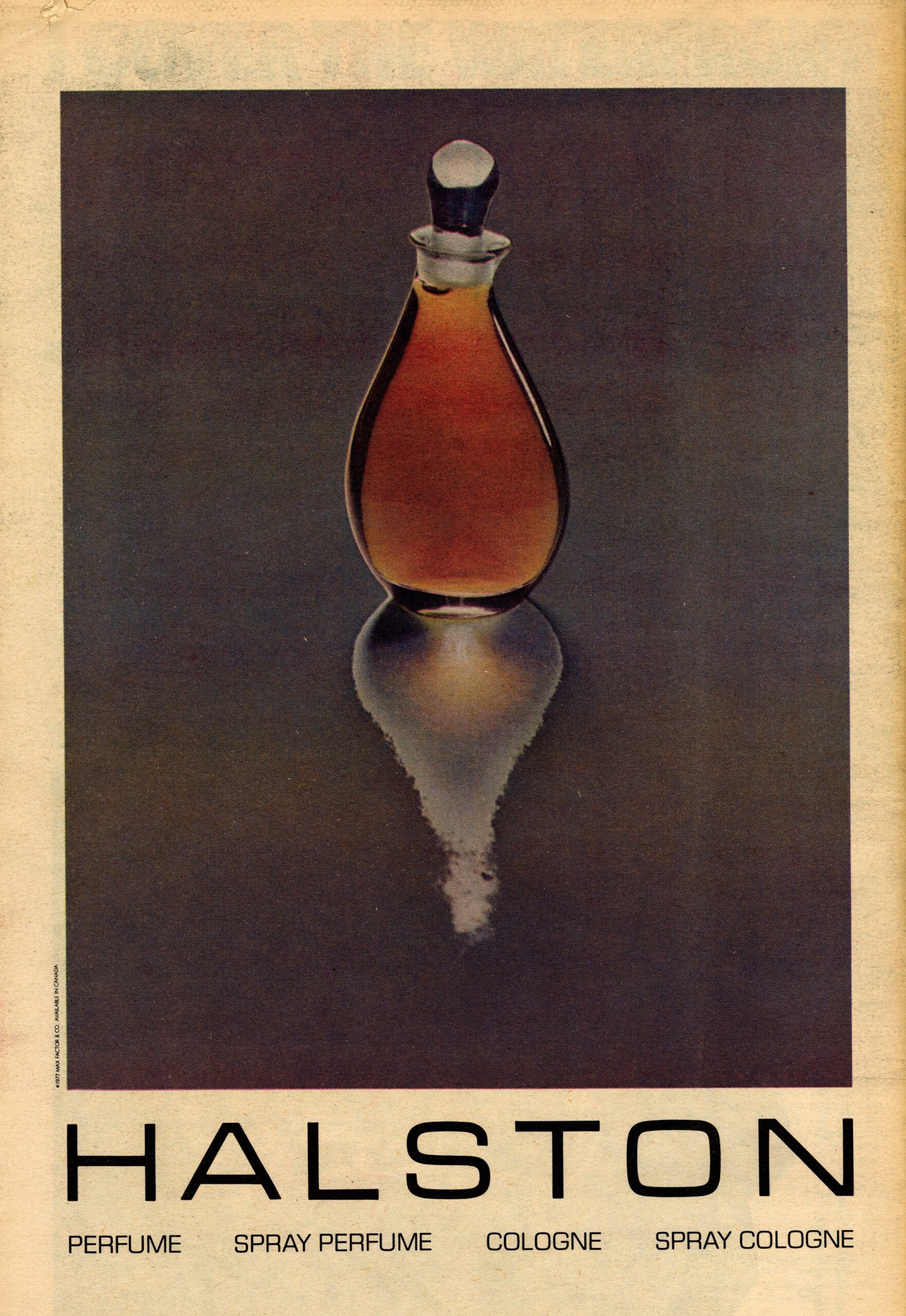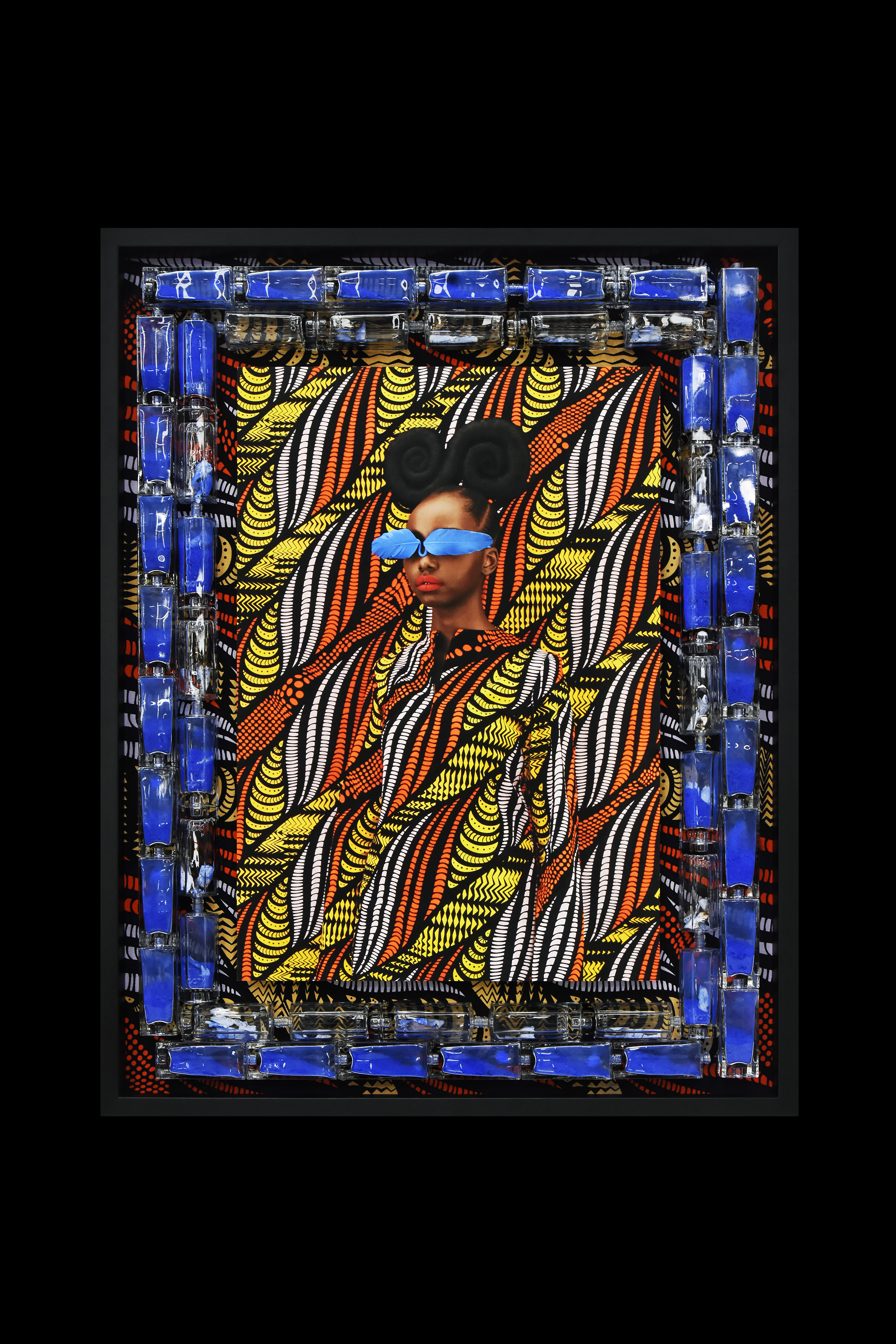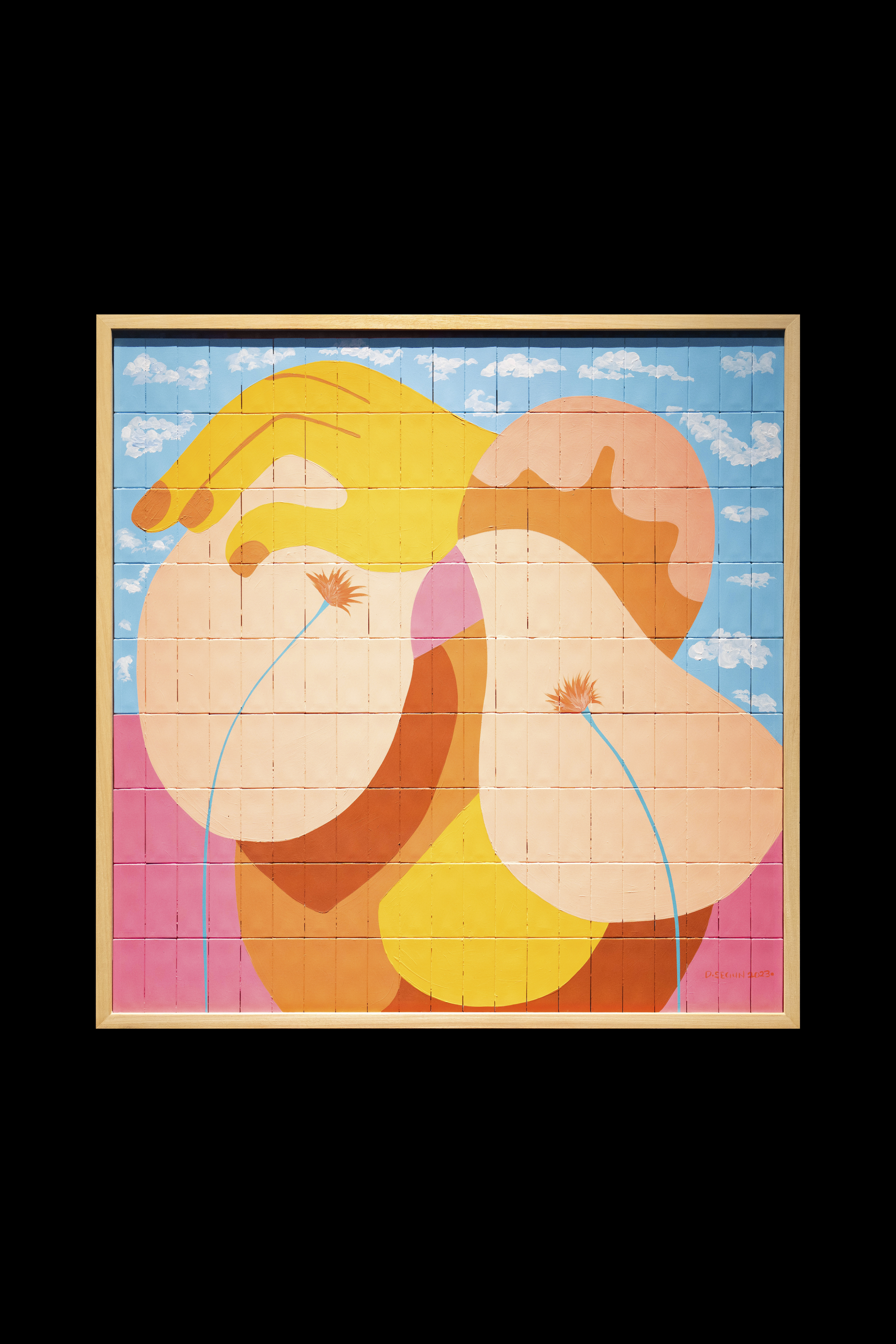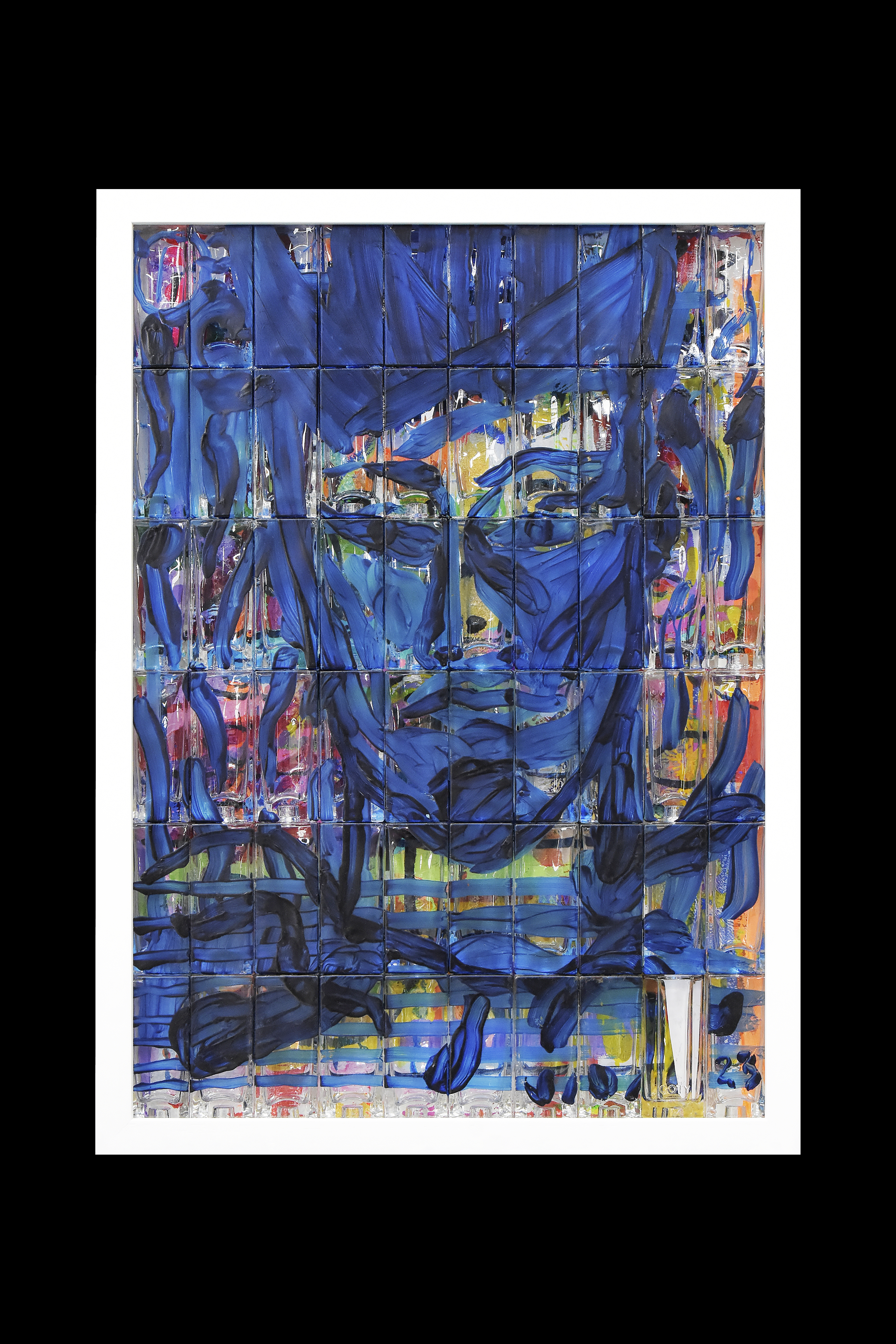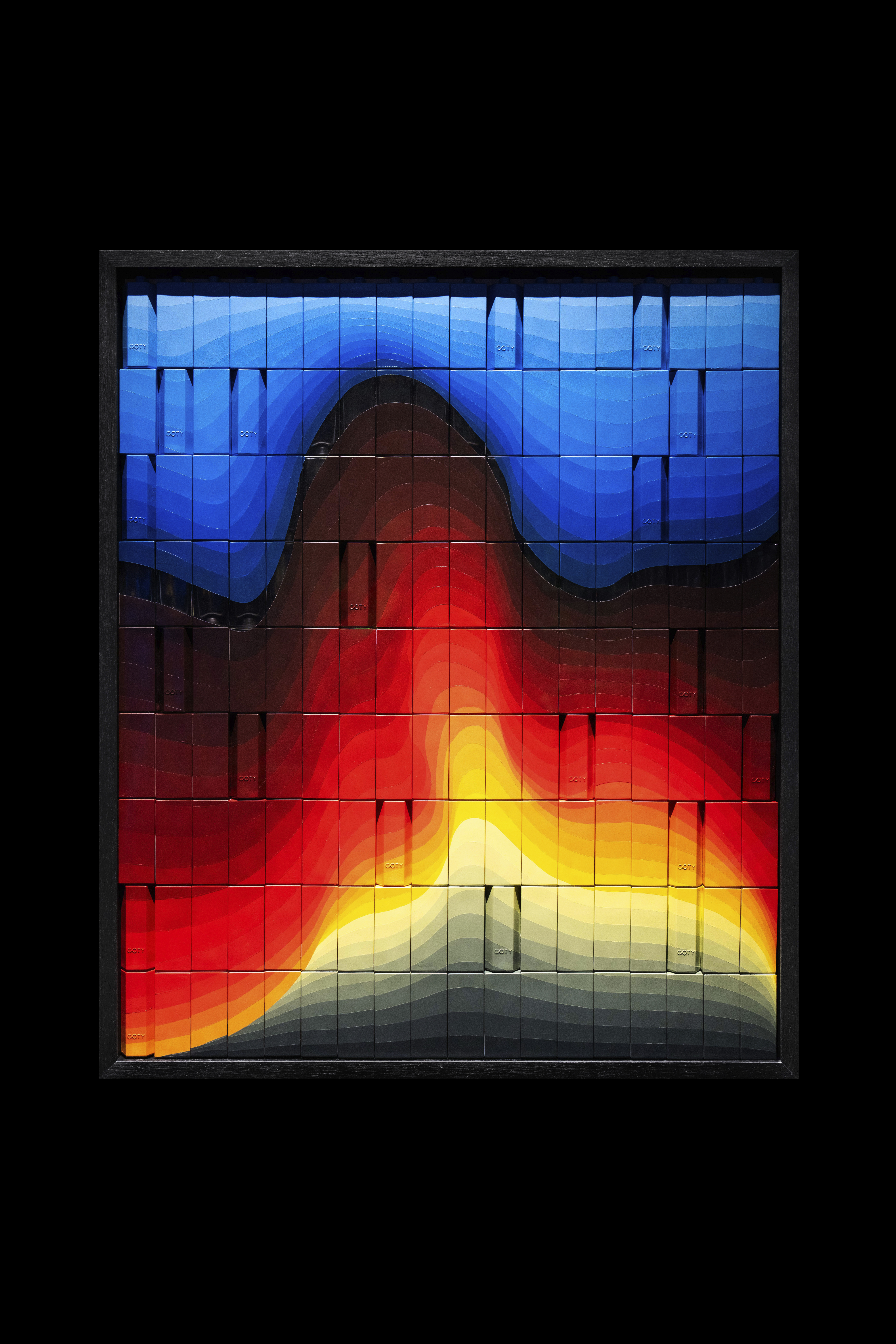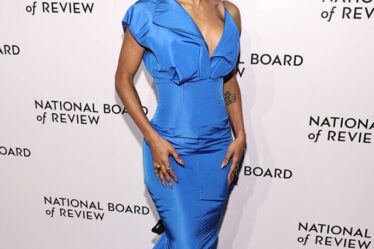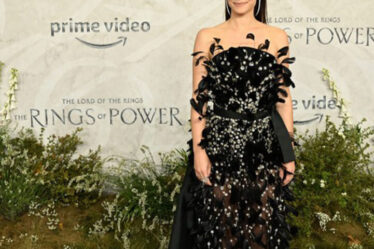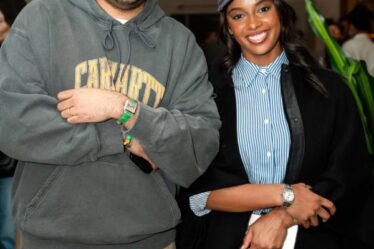
In 1975, the disco-famous designer Halston debuted his eponymous women’s perfume. The bottle, conceived by Halston’s close collaborator Elsa Peretti, was unlike anything consumers had seen before— a tear-shaped decanter made entirely of glass that was perhaps more fitting for a Baccarat boutique than a beauty counter. One part perfume, one part objet d’art, the amber-colored scent was an instant success and attracted an enormous audience who purchased Halston not only for its aroma, but because its design became a tangible piece of art they could collect. Since its launch, few beauty brands have defied the usual limitations of olfactory products like Halston did all those years ago. That is, until last month, when Coty announced its first-ever namesake fragrance during Frieze London.
Infiniment Coty Paris, the new fragrance collection launching in 2024, is the brainchild of Coty’s CEO Sue Nabi and her Orveda co-founder Nicolas Vu, who crafted the fragrance as an ode to self-expression. Upping the ante of Halston by twofold, Infiniment Coty Paris’ packaging was designed to never be discarded, inspiring environmentally-conscious consumers to refill their scents. In a patent-pending practice the brand dubs “artcycling,” the perfume’s packaging is also stackable, allowing bottles to be assembled as quasi-glass canvases and transform into artwork. To commemorate the brand’s highly-anticipated launch, Nabi and Vu enlisted the artists from 1-54, the international art fair dedicated to African art, to reimagine their own adaptations using the multifaceted bottle. As you can imagine, the possibilities were infinite.
———
MITCHELL NUGENT: 1-54 is such a monumental opportunity to celebrate African artists. What does it mean to you to be part of the fair?
THANDIWE MURIU: It offers a unique platform that I appreciate as an African artist around highlighting what’s going on in the continent, the movement, the feeling, the mood, the growth, the experimentation, and it’s exciting to be part of that.
YOUNES KHOURASSANI: It’s important for me to be here because I am a Moroccan artist, [and] to be part of the development of African contemporary art.
DEBORAH SEGUN: It’s nice to be surrounded by fellow artists from the same continent. It’s also nice to be able to go out and show the beauty of our culture, the diversity, in terms of where we’re from and what we like to do.
FRANCISCO VIDAL: It’s the 11th year, so it’s kind of become a family. When I go, I always see friends and people that I met throughout these years and we grew up together. It’s always good to be back.
MOUS LAMBARAT: 1-54 was one of the first fairs that I actually saw in my life. I don’t know how many years ago it was, but when I was on that fair, just as a visitor by accident, I really wanted to be part of it. I was like, ‘Okay, I want to be part of that world.’ I don’t know why. I was not there yet. My work was not known at that time. I always feel proud when I can be part of [1-54] because it’s a community.
NUGENT: Interview’s founder Andy Warhol was obsessed with the sense of smell and believed that scent could connect past and the present. Is there a particular aroma that reminds you of your home country?
MURIU: When Kenyans cook, we always begin with tomatoes and onion. It’s kind of a joke, but for me that’s the smell of Kenya because every household you go into, when it’s time for food, you start smelling the tomatoes and the onions [laughs]. On a more nostalgic note, we have the Plumeria flower that grows in the coastal region and it has such a distinct, almost creamy smell to it. I always associate that scent with just relaxing memories of nature and beauty and rest.
SEGUN: It’s weird but frying onions. My city doesn’t smell like onions, but usually when I was a child, once my mom was frying onions and stuff with the stew, it just made me excited. I think that’s one thing because it just reminds me of home. Sometimes when I’m even around the neighborhood and I smell someone frying onions, I just get triggered because it reminds me of Nigerian food.
VIDAL: There’s the scent of a library, the books [at the] a cultural center nearby at the place I grew up here in Lisbon. I remember when I was really young and the first time I had drawing lessons, I was four. And I really remember the smell of the wood and the books together.
LAMBARAT: For me, it’s when you smell bread in the morning. I still think it’s one of the best smells in the world, fresh bread or something just fresh baked combined with just waking up. I mean, you can’t mess up that day anymore [laughs]. It’s a memory that I will always have about Morocco.
NUGENT: Warhol was an avid collector of fragrances—hoarding hundreds of different perfumes and scents in his lifetime. He did so because he was petrified of losing the ability to associate a scent with a particular memory. Is there a specific smell that you would never want to forget?
MURIU: There’s a very distinct smell in the air when it’s about to rain in Nairobi. And for me, that’s a smell of home.
VIDAL: Maybe something related to family. I know a mother’s cooking always make you feel warm. That’s what I never want to miss. And maybe I will try to learn how to cook like my mother in the future. And to give that to my kids, also. Something that comes from up and then goes to the other. How you can understand love and how you can give love again. I think that’s at home that you know how to do it.
KHOURASSANI: Well, the only thing that I wouldn’t forget, it’s the smell of rain on Moroccan soil.
SEGUN: I love the smell of rain, the dampness, it makes me sleep better. For me, that’s something I would never want to lose. I can tell when it’s about to rain, I can tell when it’s just finished raining, and I can tell when it’s right in the middle. I know the difference. It’s weird, but I know the difference [laughs].
LAMBARAT: I think it’s the memory that is linked with the fragrance that gives the value to the smell. I wish I still knew how my grandmother smelled or my grandfather smelled. I don’t remember. I was too young.
NUGENT: It’s very unusual for a commercial item like a perfume to have the tangibility to become art. What was it like using Infiniment’s bottle as a medium in your art?
MURIU: My work is heavily influenced by objects, so just the challenge of taking this object that we know in just one context and turning it into art, which is not naturally where you go when you see a perfume bottle. It was a very exciting exercise for me. It really pushed and challenged just how I viewed an object like a bottle.
KHOURASSANI: It was a conceptual challenge because it was hard to find a way to express scents to a painting. And the other real challenge was technique because it was the first time I painted on glass. It was automatically complicated.
SEGUN: It was an absolute pleasure painting on it. It’s a new medium—I’ve never painted on glass, so in terms of the technicality of it was a bit difficult. But eventually it came together, and I was really happy with it. I was appreciative of the thoughtfulness behind the design of the bottle as well, and I like that you can stack it on. It’s almost like a sculpture piece, there’s so much you can do with it [and] it just feels like the possibilities are endless.
VIDAL: I like to assemble things, so it was not really difficult for me. I like the unity to have unity. It’s silk screen, like Warhol. So this would be really close to the exercise [of my work] with the perfume. Knowing that I would be working with the rectangle [shape] and it [became] a really, really, really easy job to do because it was all these different units that I love and to have in my work, too.
MOUS LAMBARAT: Well, the thing that was interesting was that the bottles were able to be stacked. It was not easy to do because at some point, it was like, ‘Okay. We have to glue all these bottles together.’ It was not easy, but afterwards, it became very…how do you say? Meditation. It was filling up every bottle with the paint. You put the bottle there and then again. It was very continuous. Afterwards, I remember saying I actually had a lot of fun doing it. I was not on my phone. I didn’t have time to check my emails. It was quite a busy period at that time. It really distracted me from life.
NUGENT: How did you approach the project and what you wanted to create aesthetically in your individual pieces?
MURIU: I read the description of the Encore Une Fois perfume and it was talking about rising like a phoenix, [and] creating something new. So I wrote out the poem [featured in the art] by hand several times, and then I burnt it all down and mixed the ash with blue pigment – almost the idea of creating something new. We’re taking ash and adding color to it and making it beautiful in a way we didn’t think about. And the idea that you can infinitely turn it around every time over and over again, and that idea of renewal and the phoenix burns and then it comes out of the ashes and then it burns again.
KHOURASSANI: It was a really big challenge because it was the first time that I used glass in my work. I drew on every bottle of perfume and there were 164 bottles of perfume [laughs]. I usually work with cellulose paint, which is used for cars, but for this piece, I used acrylic on glass and it was a long process.
SEGUN: My fragrance was Soleil d’Ikosim, and I was inspired by the theme behind it, which is about childhood memories, living by the Mediterranean, the sun, the gardens, and things like that. And it just reminded me of the idea of being in a bubble, but my bubble was a complete contrast to hers. Hers was a lot more pleasurable; she was able to be free; whereas I was more introverted, was more quiet, I was always scared to show myself. So I took inspiration from that and painted my idea of me opening up and growing. It’s just how I’ve moved from childhood to being an adult and being more confident in myself, in my body, and just as a woman in general. It was really interesting to me because it still relates to my work in terms of the constant documentation of my growth, and I just wanted to portray that story in the painting.
VIDAL: They told me that the creator of this perfume wore this perfume every day. So, for me it gave me this sense of a monthly schedule, so the composition was [in the context of] a space of time. That’s why you saw these papers on the wall. One day I did this drawing. Monday, I did this, Tuesday, I did this drawing. It was something new because I never had the scent as the first of the five [senses] to be the first inspiration. I always use my eyes to start something, so that was really something new. Can I think about a memory and make a drawing? This memory comes from the nose first, not the eye. That was the exercise. That was the big question. It was a good sensation.
LAMBARAT: It really started with the name [of the perfume] that they gave me, Entre Genres. It’s between the two. I translated it as belonging. A lot of my work represents belonging and not belonging. We all want to belong to something. I always loved the blue light. It’s called L’heure Bleue. It’s like between sunset and pitch black. It’s the blue hour, which if you look it up, it’s something that doesn’t belong to both. It doesn’t belong to the day, and it doesn’t belong to the night, which I always thought was interesting. That’s why I shot the photo between these two.

